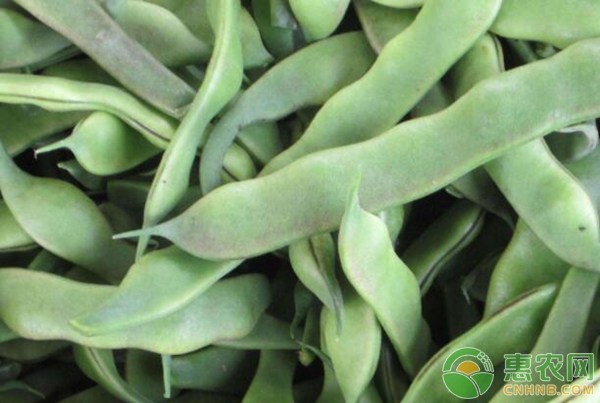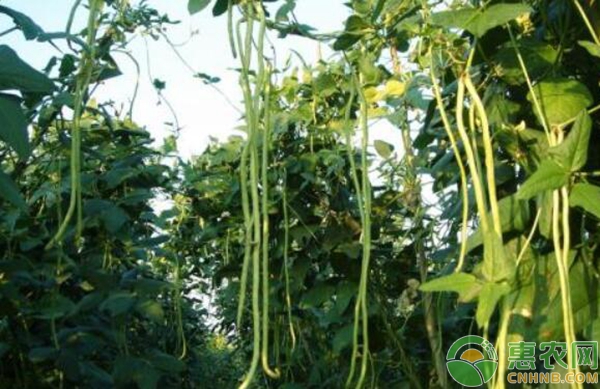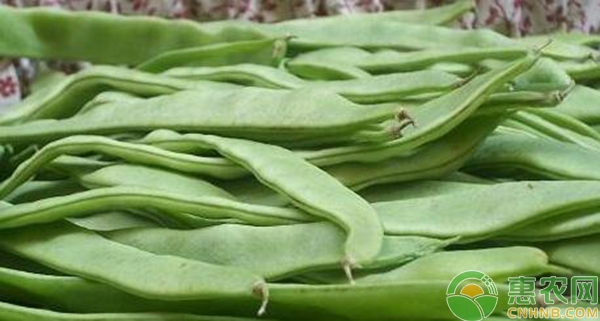How to manage the greenhouse? Management points after the colonization of Beans!
Many bean growers leave a message saying how can they make high-yielding beans? In fact, if you want to produce high-yield beans in the greenhouse, you must do a good job in the management of the greenhouse after planting, and edit the management points of the greenhouse after planting. Let's take a look. 1. Common problems in seedling stage (1) Changchang Miao: The seedlings are often the phenomenon that occurs during the nursery. The seedlings are thin, the internodes are long, the leaves are thin, the color is light green, the tissues are soft, the roots are few, and the seedlings are light. After planting, it is easy to wilting, the survival rate is low, and it is not possible to prematurely produce high yield. The reason for the emergence of seedlings is mainly due to insufficient light, excessive nighttime temperatures, and excessive nitrogen and water. The seeding density is too large, the seedlings are crowded, and the light in the seedlings is weak. In addition to the emergence of high seedlings after emergence, it is prone to occur, and the other period is 15-20 days before planting. At this time, the outside temperature is warmer and the seedlings grow faster. At this time, the seedlings have grown and the leaves are shaded. If the temperature and humidity are not well controlled, it is easy to grow. In addition to expanding the nutrient area, strengthening the light, reducing the bed temperature, not biasing the application of nitrogen fertilizer and properly controlling the temperature of the seedbed, using 800 times liquid Jiamei dividend to root, can also use growth inhibitors to control the growth rate of seedlings, such as 50% chlormequat Dilute 2000-3000 times, spray on the seedlings or pour on the bed soil, spray 1 kg of liquid medicine per square meter seedbed, and it will be effective after 10 days. (2) Aging seedlings: When the seedlings are aging, the growth is slow, the seedlings are small, the roots are aging, the internodes are shortened, the leaves are small and thick, the dark green is dark, and the seedlings are brittle and hard. The reason for the aging of the seedlings is mainly that the bed soil is too dry and the bed temperature is too low. During the nursery period, the child is afraid of long-term, and the long-term control of excessive water is easy to cause aging of the seedlings. If the nursery seedlings are separated from the groundwater by watering, if the watering is not timely, it is easy to cause the soil to dry and grow into aging seedlings. Therefore, when raising seedlings, the nursery environment should be properly controlled. The age of the seedlings should not be too long. The water can not be dehydrated before replanting, and small water must be sprayed when water is scarce. It was found that the aging of the seedlings, in addition to the normal management of temperature and moisture, can be sprayed 920 (the active ingredient is gibberellin) 10-30 mg / kg, and returned to normal after 1 week. 2, temperature management The flowering shed temperature is too high or the stagnation weather is the main reason for the winter and spring cowpea falling and falling, and the temperature in the shed should be reasonably regulated according to the biological characteristics of cowpea. The temperature management of cowpea after planting can be carried out in three stages, that is, before the flowering, the temperature of the shed can be controlled at 25-30 °C during the day to promote the development of stems; the flowering period can control the temperature of the shed during the day at 24-28 °C, and cannot exceed 30 °C. If it exceeds 30 °C, it will fall due to poor flower bud differentiation; during the pod-forming period, the shed temperature can be increased, and the shed temperature can be controlled at 25-30 °C during the day to facilitate the development of fruits and stems. Continuous cloudy days, rain and snow are the most important factors that cause the winter and spring cowpeas to fall into the pods. Continuous raining for more than 4 days, the flower pods are not guaranteed, the shed temperature should be increased as much as possible to ensure that the plants are not affected by freezing; if the continuous rainy weather is less than 4 days, reasonable management can protect the flowers and protect the pods. In the case of continuous rainy weather during production, the shed temperature should be raised by means of “shed sheds†and pulling grass rafts to achieve the purpose of preserving flowers and protecting pods. 3. Fertilizer management Watering: When the seeding bottom is sufficient, from seeding and emergence to the first inflorescence tender pod, it is necessary to carry out multiple cultivating loose soil, apply 800 times liquid red dividend 1-2 times, adjust the soil, promote root and leaf robust growth, prevent The seedlings are long, in case of drought, watering can be done once before the vines are poured, and the soil is ploughed in time after watering. The first inflorescence of the first inflorescence begins to be watered after sitting, and should be ensured that there is sufficient water supply. Watering should be avoided to avoid the flowering period, to prevent a large number of falling flowers and pods, resulting in reduced production. When the outside temperature is high before the film is buckled, it should be watered in the morning and evening. Before the film is sealed, the outside temperature is low. It should be watered before noon on sunny days. After watering, it should be ventilated in time to remove moisture and prevent condensation at night, causing disease. In order to prevent watering from lowering the ground temperature in winter, water should be poured as little as possible. As long as the soil is moist, do not water, and watering should be done with warm water. It is best to use drip irrigation with a storage tank. Generally, when the temperature starts to rise after February, the number of watering can be gradually increased. How to get warm water: The first is to use deep groundwater. The temperature of the deep groundwater is higher than the temperature of the surface water. It is suitable for watering in the greenhouse in winter. The deep groundwater can be extracted by water pump for watering. The second is to preheat the water in the greenhouse. A water storage tank is built in the greenhouse, covered with a plastic film with good light transmission properties. The light in the greenhouse and the excess heat in the greenhouse are used to warm the water, so that the water is warmed up, and the water is heated after the water temperature rises. The third is solar preheated water. Install 1-3 solar water heaters on the top of the greenhouse, store the water with suitable temperature after heating in the pool in the greenhouse, and lift water from the pool when watering. 4, scientific topdressing After each flowering pod is seated, it is topdressed every 15 days in combination with watering to regulate the soil and promote the growth of fruit pods. Later, according to plant growth, combined with pest control, timely supplementation of foliar nutrition. To achieve high yield of cowpea, pay attention to the following three points in the management of fertilizer and water: One is to supplement boron and calcium before flowering, in order to increase the flowering pod rate of cowpea. The second is to control water during the flowering period. Control the water should have a degree, do not control the head. Because of excessive water control, the soil is too dry, which can cause the cowpeas to fall into the pods. In order to make the cowpea flower soil not too dry, you can pour water once before the cowpea blooms. If the soil is too dry during the flowering period, you can also pour a small water. In short, the cowpea flowering period should be kept dry and not dry, and it is most suitable for the cowpea flowering and sitting pod. The third is to add potassium and calcium after the flower. After the cowpea flowering and sitting on the pod, the amount of potassium and calcium needs to be gradually increased, and the high-potassium and high-calcium fertilizer can be applied per acre for the purpose of expanding the pod. 5, plant adjustment Controlling the length: 3-4 pieces of true leaf stage of seedlings, spraying 12-15 mg/kg of paclobutrazol wettable powder on the foliar surface can effectively prevent or control the growth of plants and increase the pod-forming rate of individual plants by about 20%. If there is a long phenomenon after the shed, you can spray the same concentration of paclobutrazol once more. Foliar application of 10-25 mg / kg of naphthalene acetic acid during flowering period can prevent falling flowers and pods. Note: Due to the different temperature and concentration of the drug, paclobutrazol and naphthaleneacetic acid must be applied in a large area after a small area test. Hanging vines: When the plants start to vine, they should use nylon rope to hang the vines. When the plants grow to the top of the shed, they can carry out vines and pan vines, extend the harvesting period and increase the yield. Before the vines are removed, the lower old leaves should be removed and taken out of the shed. Then the stems of the old leaves are removed together with the hanging vines around the roots, so that the plant growth points in the whole shed are evenly distributed in a south-north. High sloped surface. 6, timely harvest In the cultivation of cowpea wintering, the price before New Year's Day and before the Spring Festival is the highest. Therefore, we should try to concentrate on these two time harvesting. Should also pay attention to timely harvest, avoid harvest too late, bean aging, reduce product quality. Ventilation is one of the most important components in a successful greenhouse. Circulation Fan,Greenhouse Ventilation Fan,Automated Greenhouse Ventilation Fan JIANGSU SKYPLAN GREENHOUSE TECHNOLOGY CO.,LTD , https://www.engreenhouse.com


If there is no proper ventilation, greenhouses and their growing plants can become prone to problems. The main purposes of ventilation are to regulate the temperature and humidity to the optimal level, and to ensure movement of air and thus prevent build-up of plant pathogens (such as Botrytis cinerea) that prefer still air conditions. Ventilation also ensures a supply of fresh air for photosynthesis and plant respiration, and may enable important pollinators to access the greenhouse crop.
